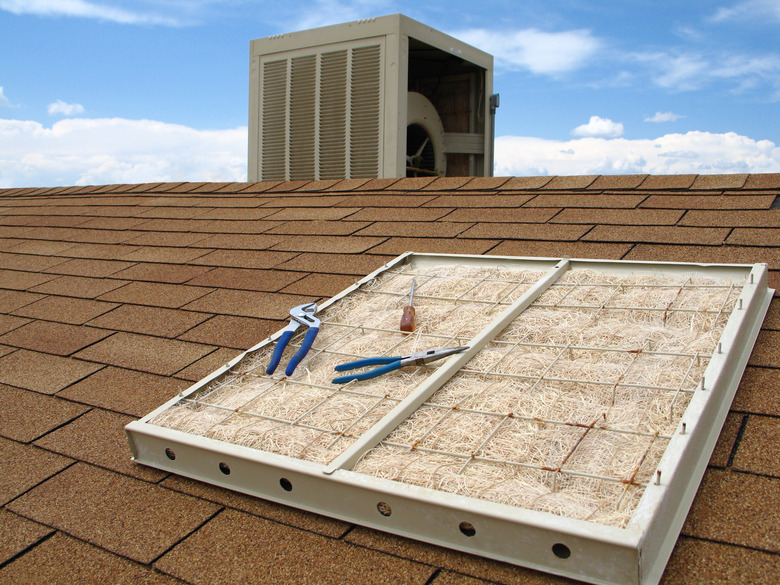How To Make Swamp Coolers Work Better
We may receive a commission on purchases made from links.
Whether you call them swamp coolers or evaporative coolers, figuring out how to make these energy-efficient cooling options work better can increase your comfort on hot summer days. Swamp coolers use water to cool air by 15 to 40 degrees Fahrenheit, pushing cool air into your home and hot air out. The way you use and maintain your unit can affect how well your swamp cooler works, and troubleshooting swamp cooler problems can also help.
Lower the Humidity
Lower the Humidity
Dry conditions are ideal for using swamp coolers. Since the point of the evaporative cooler is to use water evaporation to cool the air, you need dry air for it to work. Humid conditions don't allow the swamp cooler to lower the temperature like it can with dry air. That makes swamp coolers most effective in deserts and arid climates.
If you live in a very humid location, no amount of dehumidifying in your home will likely help. However, even in drier climates, finding ways to lower the humidity inside your home can help the swamp cooler work better. Running a dehumidifier can lower the humidity level in your home. Moisture-loving house plants can also soak up some of the extra moisture in the air.
Open Your Windows
Open Your Windows
If you're used to traditional air conditioning systems, this tip might seem counterproductive. With traditional air conditioning, you want to keep the windows shut for it to cool effectively, but swamp coolers perform better with windows open a little. The open windows let hot air out and also help control humidity in the home, allowing the evaporative cooler to work more efficiently.
You only need to open the windows a little bit to help your swamp cooler work better. If you open them all the way, you'll let hot air in. Test out different windows and open them in different amounts to find the configuration that makes your swamp cooler work best.
Use Cool Water
Use Cool Water
When filling a portable swamp cooler inside your home, use cool tap water, ideally around 50 degrees Fahrenheit. Since the water is already cool, it can help make the air feel cooler. Some people recommend adding ice to help with cooling, but ice can actually slow down the process since it has to melt first before it can be evaporated.
If you have a whole-house swamp cooler, it likely has its own water source. Check the water level regularly, at least once per month, to make sure the system is keeping it at an appropriate level. Make sure it's below the overflow tube. You can adjust the float valve if the water level is too high or too low. When checking the water levels, make sure there aren't deposits in the evaporative cooler that might interfere with its operation.
Adjust the Position
Adjust the Position
When you use a portable swamp cooler inside your home, testing different locations for the unit can help improve cooling. You'll feel the coolest when you have it pointed directly at you. The cooled air comes your way, and you can feel the cooling breeze from the fan at the same time. You might direct it toward your couch so it hits you while you're seated, for example.
Maintain Swamp Coolers
Maintain Swamp Coolers
Handle routine swamp cooler maintenance to keep it at optimal efficiency. Vacuuming the air intake grills and fans at least once per cooling season keeps dust and debris out of the way. Cleaning the water tank with mild soap and water and rinsing it thoroughly is also helpful. Check all of the belts, tubes and other parts at the beginning of the season to make sure they're in good condition.
Replace the swamp cooler pads regularly, especially if you notice them cracking or growing mold. They typically need to be changed twice per cooling season. If you run the swamp cooler non-stop, you might need to replace the pads monthly. Clean the pad frames thoroughly before putting in the new pad.
